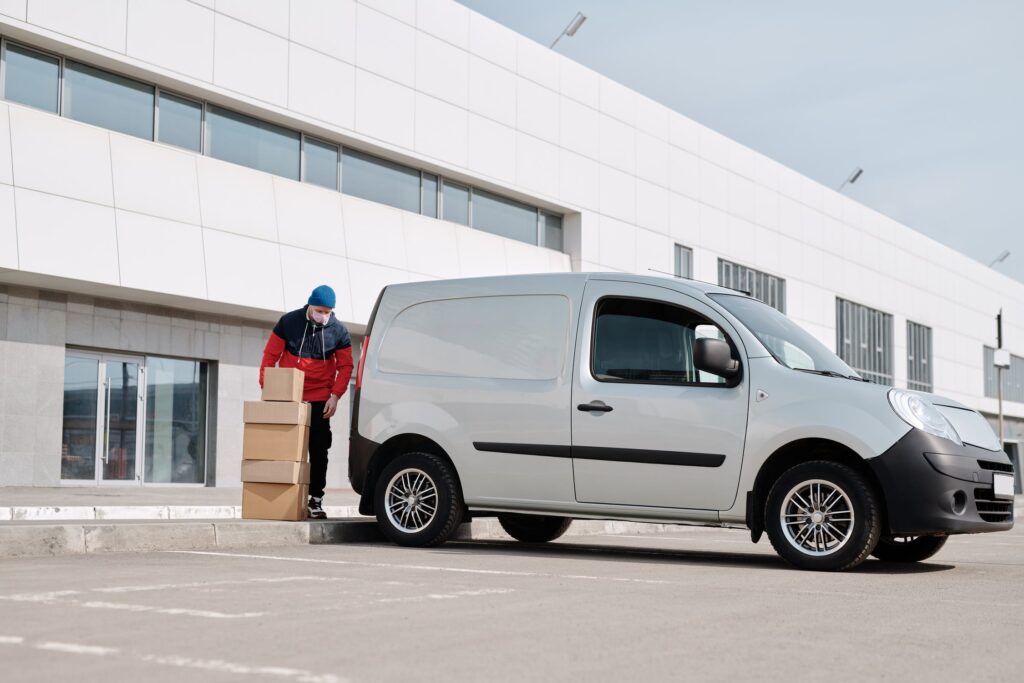How to Make Buying a Business Van More Affordable

SMEs and the self-employed don’t have the spending power of larger companies. So watching the pennies is not only essential but a lifeline for sole traders and small businesses alike. Buying a van for your business comes with its own set of demands. From finding the most affordable van to run and insure to getting the best finance deal, there is a lot to think about.
So what are your options? Here we take a look at the key differences between leasing and outright purchasing to help you weigh up the most affordable option for you:
What do you want your van for?
Before considering finance options, you need to consider what you want to use your van for. Is it simply to make local deliveries more accessible to your customers, or are you going to work on a construction site?
Knowing the potential risks and damages before you approach a lender can make all the difference. Make sure you check out all the small print to see what’s covered in terms of damage repair and if there are any extra costs to consider.
Beyond the basics, you need to think about the future needs of your company as it grows. Think about fuel options, if you need to consider an electric van or more mileage or vehicle capabilities in the years to come.
Newer models of vans also boost the image of your business. So make sure you look at all the options available that will allow you to trade your van for a newer model every few years. This will curb the costs of buying and selling and keep your van looking sharp.
Buying vs car finance
Straight off the bat, buying any type of vehicle outright is more of a financial burden in the first instance. It can drain you of saving and is one heck of an investment in one go. But, you won’t have to keep paying for the van over a fixed period.
Selling the van on after purchase is arguably easier than being trapped by a lease or finance contract for some time. However, new vans will start depreciating in value as soon as you drive them away from the dealership.
Van finance, on the other hand, can last anywhere from 3 to 7 years, depending on the type of contract. The most popular types include:
Hire purchase (HP): After you’ve paid an initial deposit (usually 10%), you pay for the van in monthly instalments. The more deposit you put down, the lower your payments. When your contract expires, you have the option to purchase.
The van could be repossessed if you miss any of your payments.
Purchase Contract Purchase (PCP): If you’re looking for a flexible van loan, then PCP is worth a look. Like HP, you place an initial depost followed by low, fixed monthly payments. But, you don’t pay for the complete value of the vehicle. Instead, you pay towards the guaranteed minimum future value (GMFV) of the van.
Once your contract is up, you can either return the car, sell it or pay a big lump sum to own the vehicle outright.
Van Leasing: This is a long-term rental agreement which gives you exclusive use of a van or pick-up truck for a set amount of time. You pay a fairly sizeable upfront rental (usually three months rental), followed by a series of monthly payments for 2 – 4 years.
When your contract ends, you hand the van back to the finance provider – no strings attached. This leaves you free to lease or purchase another vehicle at your leisure.
In short, this can be a cheaper funding solution for buying a new van. You don’t have to worry about the depreciation or selling the vehicle as that responsibility lies with the finance provider.
What extras do you need?
The likelihood is, you will need to customise your van to your required specifications. Anything from racks, dashcams, decals, trims and other interior adjustments will likely be on your list.
But here’s the rub: any alteration that isn’t reversible will likely invalidate your leasing agreement unless you are planning on buying the van at the end of your contract.
Make sure you look out for deals that offer the flexibility you need to modify your van.
Make sure you shop around
One of the best ways to ensure you don’t get ripped off at the dealership is to shop around. Make sure you compare different types of van finance online and visit various vendors to get a flavour of what is available.
Different vendors will specialise in a range of van options. From large vans to stocking all the latest models on the market, make sure you check out what’s available ahead of time.
Having a budget and knowing the absolute maximum of what you can afford will ensure you don’t overspend. Plus, comparing prices across the board will ensure you know what to expect.
Before you sign
If you opt for a van finance or lease deal, you will likely face annual mileage restrictions. So make sure you read through all the fine print in your terms and conditions to see what is covered.
Remember to check for ULEZ, breakdown cover, servicing and manufacturer’s warranty inclusions.
Before signing anything, ensure you are happy with the contract length and all the costs involved. If you’re lucky, insurance might be included.
Claim back the VAT
Some business owners forget about reclaiming their VAT with all their expenses. According to the government website, you can reclaim the VAT on most commercial vehicles (vans, lorries and tractors) as long as you only use it for business.
Before you buy, ensure the vehicle is classed as a van for tax purposes to get some money back later. This includes everything from costs of repairs to maintenance.
Whether you choose van finance, lease or pay outright, buying a van for your business has never been more affordable. What will you choose?






